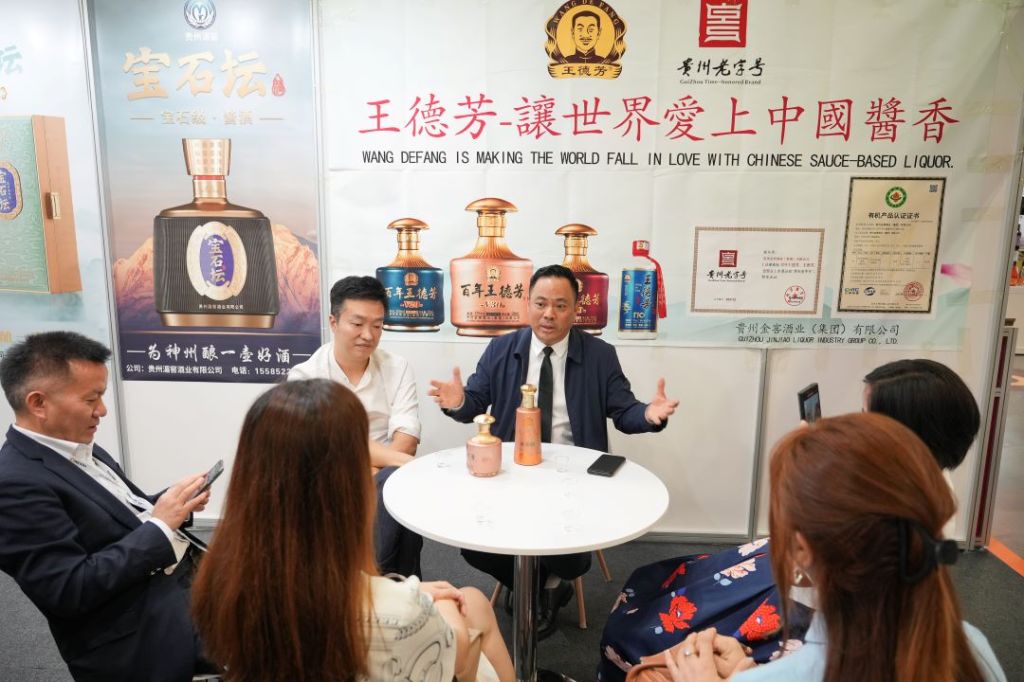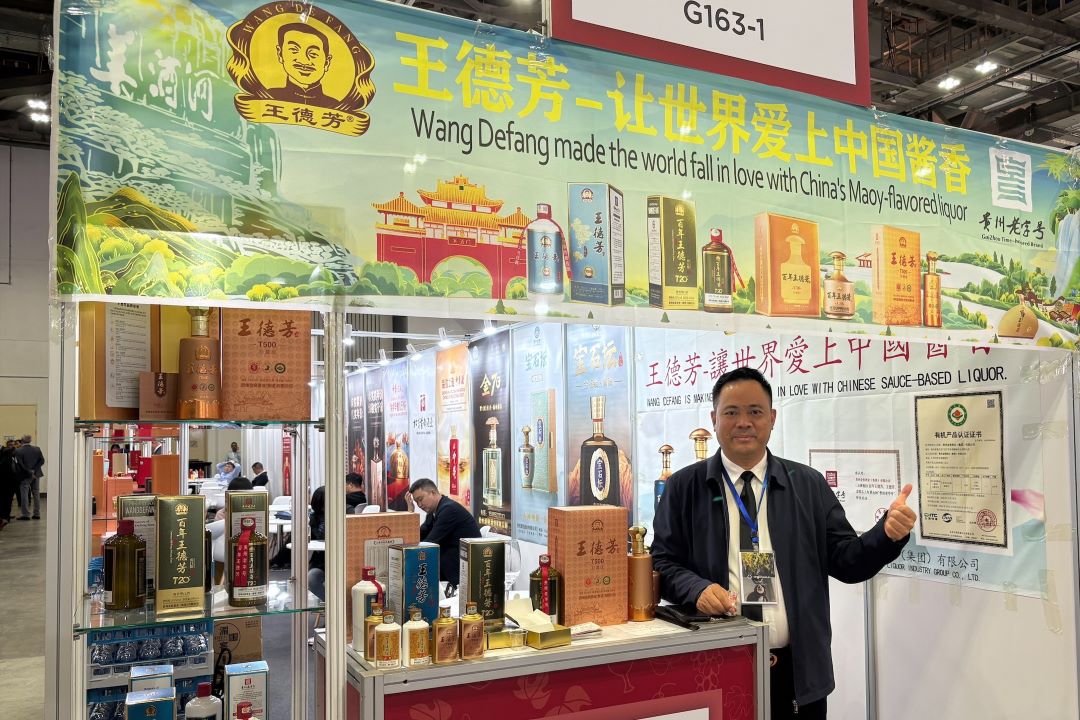At Vinexpo Asia 2025, amongst the almost 1,100 exhibitors from 30 countries, more than 100 spirits were on show across the three-day premier event for wine and spirit trade professionals.
National Liquor News visited the spirits pavilion at the expo where 15 brands of the spirit baijiu, from China’s Guizhou province, were on display.
The product is considered by market research firm IWSR as a status spirit – a product priced above US$100 per bottle – that dominates the Chinese market, responsible for around 95 per cent of the total value of status spirit sales in the country.
Baiju is an important part of Chinese drinking and business culture, as we learned from Si Chen, a representative from Guizhou-Qianjiu Global Tour, a company working alongside the Guizhou department of commerce to showcase baijiu on the international stage.
According to the 2025 work report of the Guizhou Provincial Government, the output value of the baijiu industry is expected to reach 160bn yuan (AU$34bn) this year.
With the slowing of the Chinese economy, demand for the baijiu category in China has declined. As a result, brands are looking for ways to reach untapped markets in the Asia pacific region – including in Australia.
Unique process and flavour
Baijiu is a white spirit, at around 53 per cent alcohol that is rich in flavour and made by fermenting sorghum, using an ancient fermentation process that dates back thousands of years.
Like many other high-quality spirits, the time of production varies based on desired quality, but Chen said the best baijiu takes at least five years.
He added that baijiu is different to other spirits as its flavour relies on the Guizhou region’s environment.
“Guizhou baijiu is special compared to other spirits. It is not just a liquid but an art. It needs the Chishui River, the elements within the river, and the climate around the river. It’s all different, which means our liquor is different.”
Like the French concept of terroir, any changes to the environment impact the flavour profiles, which Chen described as unlike anything else.

“There is a saying about Guizhou baijiu, that once the glasses are empty, the next morning you will be able to smell the aromas perfectly.
“From when you open the bottle there are four smells. There’s a bit of sweetness, and a little bit salty, a little cereal and even a little bit of bite. Four totally different experiences that when combined, balance perfectly.”
He said the most common way to consume baijiu is to sip it slowly from a small 30-50ml shot glass with a stem.
“If you want to enjoy the art, you have to do it very slowly. First you open the bottle, you smell it. Second, we drink. We drink 30 per cent at first sip. Swallow it very slowly. Then you get all the four flavours dancing on your tongue. It goes down very smooth.”
Dominating the Chinese market
Xu Xinzhou, a representative from Wang Defeng, a popular baijiu distiller with more than 140 years of history, told National Liquor News that the most famous and loved brand of baijiu is Moutai – considered to be the national spirit of China.
“One of the original creators of Moutai, had three distilleries to support the liquor and one of which was Wang Defang,” he said.
“These brands [at Vinexpo] are from the same provincial area as Mao Tai. They use the same river, the same techniques but they are individual and have something special.”

Xinzhou said the reason Moutai is said to dominate is a result of its history, brewing technique and culture, quality and its impact on economics and politics.
Baijiu is also typically popular among older consumers but following global trends in discretionary spending and reduced drinking, less people are buying the spirit.
As a result, the top brands are working on innovative new editions to target younger consumers.
Xinzhou said Wang Defang is doing the same, with cultural and occasional education are key strategies.
“Guizhou baijiu together is looking for new ways to match the drinking habits of the younger generation. So far, we have tried smaller bottles because of the high alcohol volume. We are also creating the perfect times of the day to drink baijiu.”
Reaching new markets
Guizhou-Qianjiu Global Tour’s Chen said baijiu does not have much of an export history, especially to western countries – something that they hope to change.
“A lot of places are used to drinking wine and beer and having a lot of choice in spirits whereas in China we are all used to drinking baijiu.
“To export baijiu outside of China we have to educate the market; tell people how when and why to drink baijiu. But this takes time,” he said.

When asked about plans for export to Australia, Chen said it will be considered in plans as the Baijiu industry is in search of new global partnerships with the help of events like Vinexpo.
“Liquor taxes are very high on spirits in a lot of countries, which then increases the cost of our already premium product. A lot of younger people don’t want to spend too much on alcohol, especially if it’s something they have never heard of.”
Chen said plans to reach English speaking countries involve, “tastings and storytelling. So that when people drink, it’s not just drinking liquid its drinking history”.

